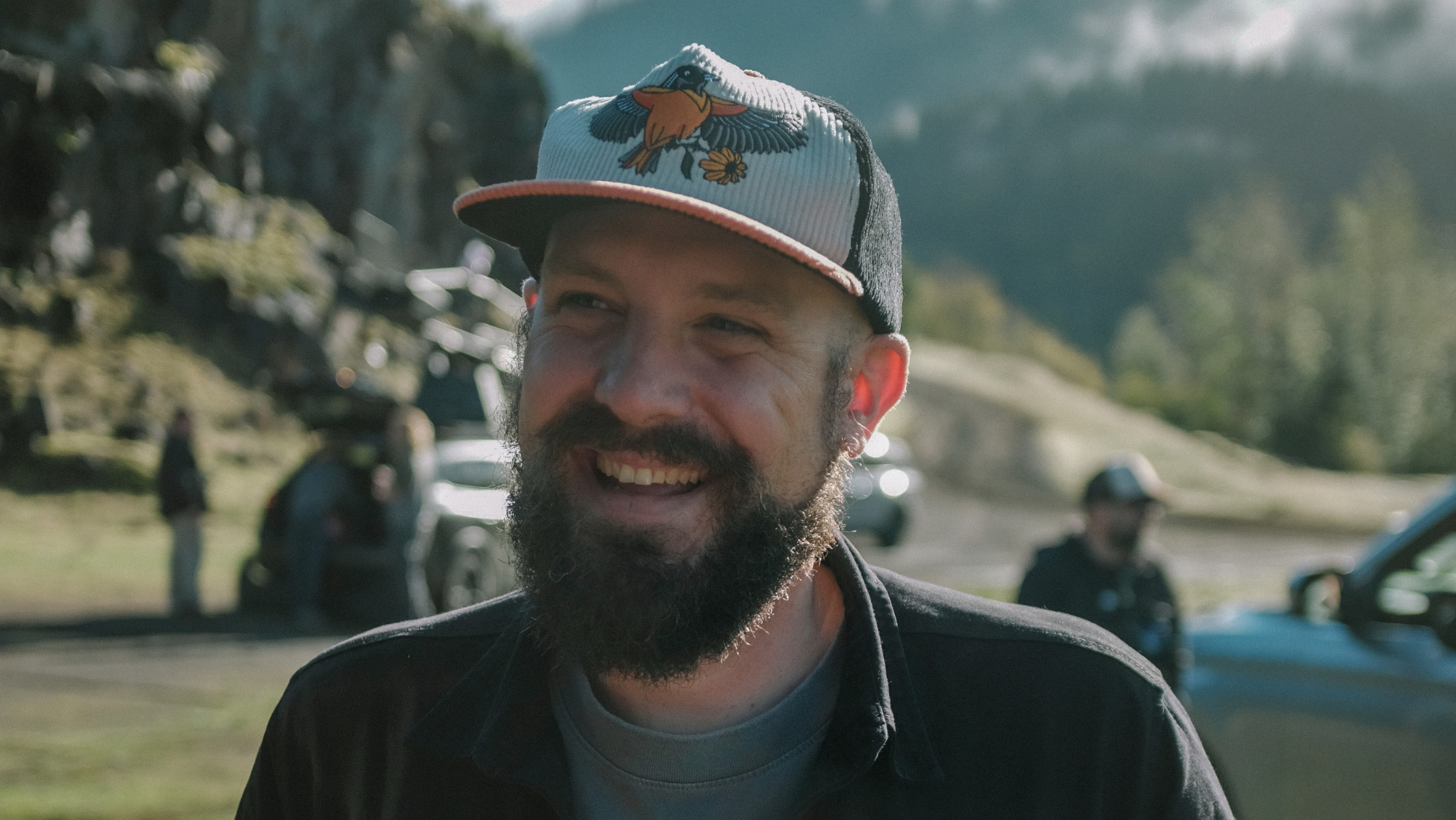
The Directors: Brent Foster

Brent Foster seamlessly marries authentic performances with beautifully art-directed visual effects to create work that is radically human.
A true citizen of the world by way of Toronto, Brent has lived in far off lands ranging from LA to India, where he worked as a photojournalist, first for the Los Angeles Times, and later across the latter freelancing for the New York Times and others. It was then that he developed a love for the moving image.
His directing styles merges his documentary background defined by authentic performances, often from real people, with carefully considered cinematography and finely crafted visual effects to create work that is polished and genuine.
Brent’s happy customers include Canada Life, Chevy, Huawei, McDonald’s, Prince Edward Island, Nature Valley and more. And his work has won numerous awards including a Silver for New Director of the Year at the Shots Awards, and has been shortlisted more than once for the Young Directors Award at Cannes and the Saatchi & Saatchi New Directors’ Showcase.
Name: Brent Foster
Location: Canada/USA
Repped by/in: Voyager, USA
Awards:
2023 - The One Club's ADC, Shortlist, CAMH, No One Left Behind
2022 - Clio Awards, Shortlist, Sick Kids, The Brave List
2022 - Strategy Marketing Awards, Gold, Sick Kids, One Million Strong
2021 - Strategy Marketing Awards, Bronze, Canada Life
2020 - Strategy Marketing Awards, Gold, PEI Seafood
2019 - Webby Award Honoree, Public Service and Activism
2018 - Young Directors Award, Shortlist
2018 - Shots New Director of the Year, Silver
2018 - Vimeo Staff Pick, ENOUGH
2017 - The Saatchi & Saatchi New Directors Showcase, Shortlist
2017 - Vimeo Staff Pick, The Last Mambabatok
2016 - Best Documentary, The San Diego Highwayman, Lucent Film Festival
2016 - Vimeo Staff Pick, The San Diego Highwayman
LBB> What are some upcoming projects that you're excited about? Tell us a bit about them?
Brent> I’ve just wrapped two really exciting projects over the summer and fall that I’m currently in post-production on. One is a PSA for a hospital network, part of an ambitious fundraising campaign, and the other is a tourism spot shot on the East Coast. Both are heavy on VFX, blending these incredible, fantastical moments with grounded, authentic performances and stunning real-world scenery.
LBB> What elements of a script sets one apart from the other and what sort of scripts get you excited to shoot them?
Brent> I come across a lot of scripts with bold and beautiful visuals, but the ones that really stand out are those that combine striking visuals with well-crafted storytelling. It’s that balance of powerful visuals and a strong narrative that hook me right away—the kind of script that resonates emotionally and connects with viewers on a deeper level beyond just what they see on screen.
LBB> How do you approach creating a treatment for a spot?
Brent> My approach to creating a treatment really depends on the timeline, but in an ideal scenario, I start by spending the first couple of days diving into research. I’ll dig into the brand, explore work both in and outside of the commercial world for inspiration, and think about how I can elevate the project with a unique perspective—all while staying true to the messaging and strategy that the agency has already developed.
Once I have a solid grasp and approach, I start writing and collaborate with a visual researcher to help curate an initial set of images that match the mood, tone, and creative approach I’m going for. I’m very particular about visuals so my treatments are highly curated. I usually go through several rounds of image pulls, adding in my own as well, until we’ve nailed the exact feel of the spot. I often team up with a concept artist or production designer to create designs and looks that bring the idea to life in a crystal-clear way.
My goal is to make my treatments as close to the final vision as possible, but still leave room for on-set discovery. During this process, I’m constantly checking in with producers to make sure the creative aligns with the budget.
I also like to pre-select DPs, production designers, and post-partners to help give the agency and client a full picture of the contributors that will help bring the vision to life.
By the time I’m pitching back, I’m incredibly attached to the project. Personally, I can’t really do it any other way. It’s a heart-and-soul kind of process for me, but that’s how I create my best work.
LBB> For you, what is the most important working relationship for a director to have with another person in making an ad? And why?
Brent> For me, the most important relationships are the long-standing ones. Whether it’s agency creatives, DPs, producers, production designers, or post partners, I value building trust and a sense of friendship with my team. There’s something special about having that shorthand with people who are not only talented but also kind, collaborative and excited to bring their own ideas to the project. I find that my best work happens when I’m surrounded by great humans who share that energy and passion.
LBB> What type of work are you most passionate about - is there a particular genre or subject matter or style you are most drawn to?
Brent> I’m most drawn to projects where the story takes centre stage. Whether it’s a sports spot, a bank ad, or a PSA, it’s always about crafting a story that connects with viewers on a deeper level. For me, the story is what makes the work resonate, no matter the genre or subject matter.
LBB> What misconception about you or your work do you most often encounter and why is it wrong?
Brent> I think most directors have experienced being pigeonholed into one genre or another. I often encounter being labeled as a VFX director. I understand why—agencies and clients like to see a track record in a specific area to feel confident you’ll deliver. While VFX plays a huge role in my work, whether it’s front and center or more subtle, what tends to get overlooked is my background in photojournalism.
I got my start in documentary storytelling, which remains a huge passion of mine. I love to work across genres from doc-style projects to sports, outdoor adventure and automotive work. PSAs also hold a special place in my heart, especially when they have the potential to make a meaningful impact.
LBB> What’s the craziest problem you’ve come across in the course of a production – and how did you solve it?
Brent> Every production comes with its share of wild challenges—whether it’s casting issues, tricky locations, unpredictable weather, travel complications or last-minute changes. It’s just part of the process.
Our job as directors is to solve problems and my approach is to stay calm, collected and collaborative. Transparency is key too. There is always a solution, no matter how crazy the situation, but how you handle those obstacles and protect the creative vision along the way is what really matters.
LBB> What are your thoughts on opening up the production world to a more diverse pool of talent? Are you open to mentoring and apprenticeships on set?
Brent> I owe everything to mentorship. Growing up in a little blue-collar town, there wasn’t much exposure to the art, but one documentary-style photo in my local newspaper changed my life.
At 14, I called the photographer who took the image, and mentored me all through high school, sparking my passion for visual storytelling.
That experience led me into photojournalism and eventually into filmmaking, where I've had incredible mentors who guided my path. I fully recognise I would not be where I am in my career without their support and I’m always looking for ways to pay that forward and to help new voices gain a seat at the table.
While I love having someone shadow for a day on set, I prefer mentoring through the entire process of a project. It’s more impactful to have an aspiring filmmaker witness everything —from pitching and seeing ideas come together to hearing agency and client feedback first-hand. Watching the collaboration unfold, from pre-production to post, gives them confidence in navigating their own future projects. It’s those in-between moments that are often the most valuable.
LBB> Which pieces of your work do you feel show what you do best – and why?
Brent> This project for Lobster PEI was filmed on Prince Edward Island, Canada and features an entire cast of non-actors. It was the definition of a scrappy and nimble production, but the entire crew poured their hearts into it. The experience of filming on the island holds a special place in my heart.
This PSA 'No One Left Behind' for CAMH was a project built on past relationships and trust, marking my third year working with the agency and client. New creatives I had collaborated with previously sent this powerful script my way. I’m really proud of what we achieved together, collaborating with a trusted crew to elevate the spot and bring this ambitious fundraising spot to life.
This was my third collaboration with the agency and client on a KIA spot, and I aimed to weave storytelling into the stunning visuals we created in the Pacific Northwest. The spot follows a man reflecting on his father asking him what he wants to do when he’s older and goes on to show the life he’s created for himself, transitioning through his life from childhood to the present.
This short film 'Enough' is part of a passion project titled, 'The Legacy Project' that tells stories of older individuals and the legacies they leave behind. It follows Beatrice, an elder in Korogocho, Kenya, who grew tired of the assaults being inflicted upon the older generation in her neighbourhood, and decided to give back by teaching self-defence, empowering those around her.















